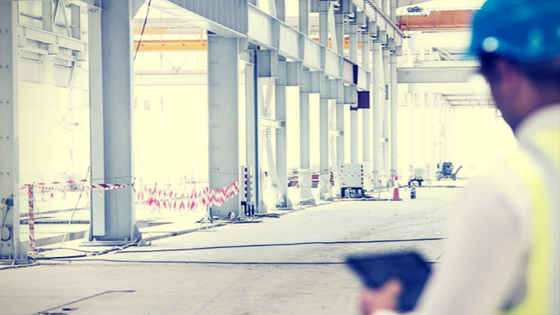How many times do we see construction workers in potentially dangerous situations? How many times do we pass a job site and see a worker in an unprotected trench?
One in five worker deaths per year come from construction. But the fatality rate for excavation work is 112% higher than the rest of the construction industry, which should come as no surprise considering that one cubic yard (27 cubic feet) of soil can weigh as much as a car.
Cave-ins can easily be fatal, and as an employer, it’s your job to protect against them. What safety system protects employees from risks such as cave-ins? Here’s what managers and supervisors need to know.
Trenching and Excavation Safety
A single trench is quite literally filled with safety hazards. It’s quite easy for a worker to be crushed simply under the weight of dirt, never mind the ease of asphyxiation, drowning, and inhalation of toxic fumes. That’s why trenches 20 feet or deeper have to be designed by a registered professional engineer.
Think about that. A literal hole in the ground is so dangerous that it has to be crafted by a licensed, highly trained engineer.
Because of the risks of trenching and excavations, OSHA has extensive rules attached to them. Three main standards apply:
- 29 CFR 1926.650 (Scope, application, and definitions applicable to this subpart)
- 29 CFR 1926.651 (Specific Excavation Requirements)
- 29 CFR 1926.652 (Requirements for protective systems)
The best place to start is 1926.650, which defines a cave-in as the separation of soil or rock material from the side of an excavation or the loss of soil from under a trench shield, as well as sudden movement in sufficient quantity to bury, trap, injure, or immobilize workers in the excavation or trench.
This standard also defines protective systems, and names several such systems, “Protective systems include support systems, sloping and benching systems, shield systems, and other systems that provide the necessary protection.”
What Safety System Protects Employees From Risks Such as Cave-Ins?
Your best bet is to start with the safety systems enumerated in 1926.650:
- Support systems
- Sloping systems
- Benching systems
- Shield systems
Support systems such as shielding use trench boxes or similar support to prevent cave-ins. Sloping systems are not physical equipment, but rather a technique in which the trench walls are cut at an angle sloping up and away from the excavation site. Benching is a similar premise in which the trench walls are cut in a series of horizontal steps angled away from the excavation site. There’s also shoring, which uses aluminum hydraulic supports or a similar system to hold the trench walls upright.
Never Forget the Power of a Competent Person
Last but not least, never forget the power of a competent person. Every trench must be inspected by a competent person every day and every time conditions change in order to ensure the trench is safe to enter. Also, you’re required under OSHA standards to have a trench inspected by a competent person before workers begin.
The Tools You Need for a Safer Workday
What safety system protects employees from risks such as cave-ins? In reality, it’s never just one system – it’s a series of safety protections working together.
Your hydraulic systems can get you started, but our safety solutions for the construction industry help with everything that comes after, allowing you to take charge of essential safety data to make the right decision at the right moment. So if you’re ready to create safer trenches (and safer work sites) get in touch to learn how our software can help.
